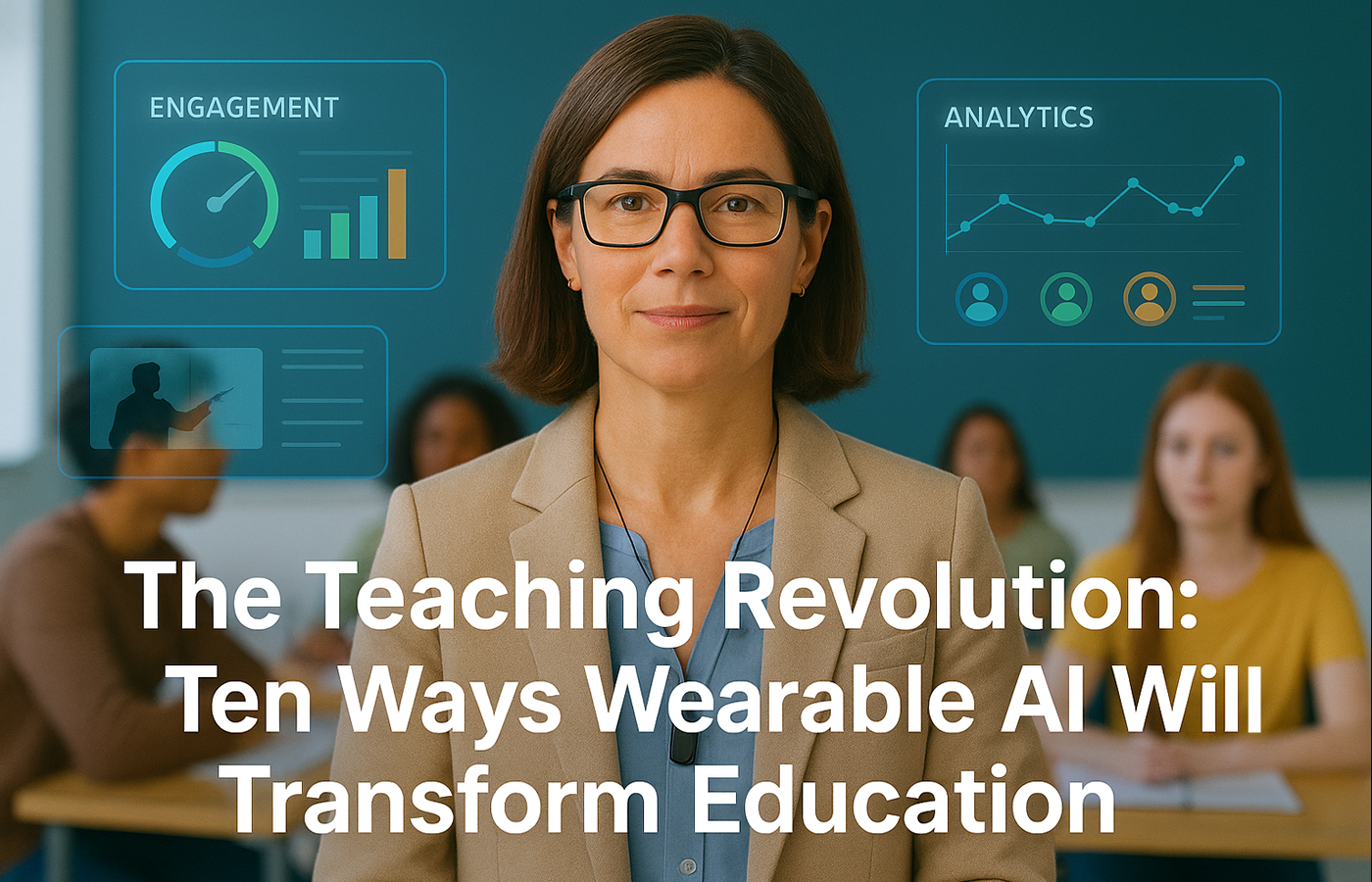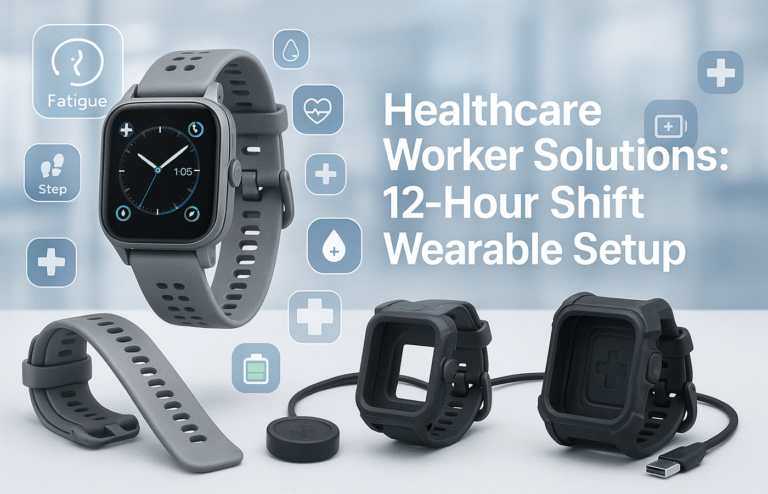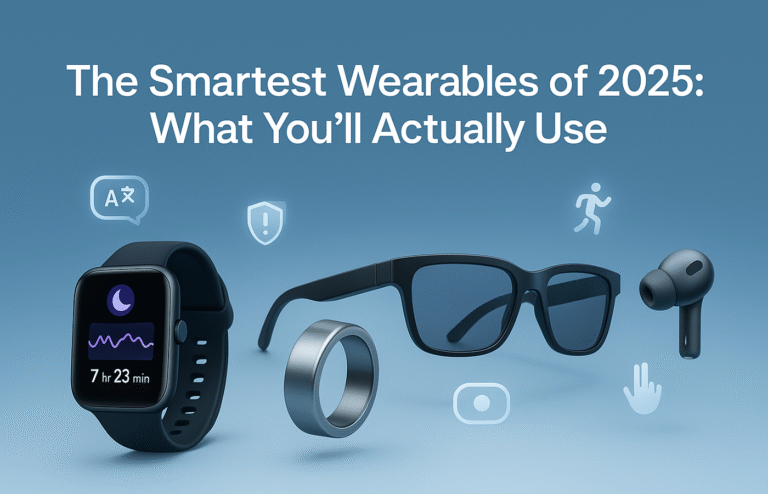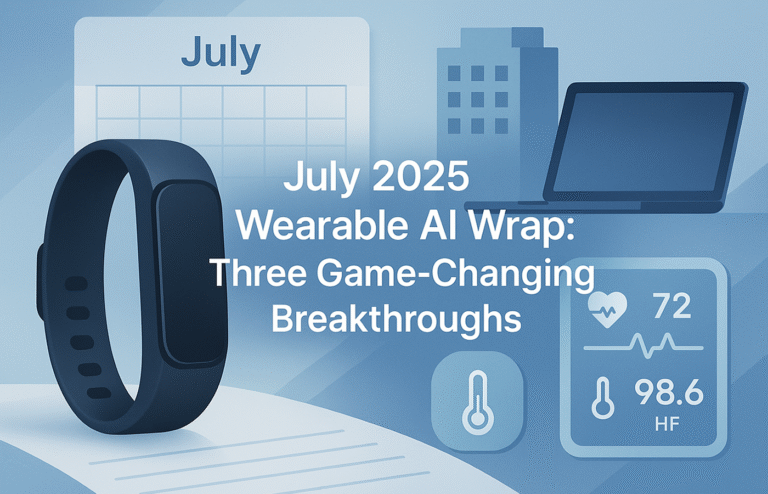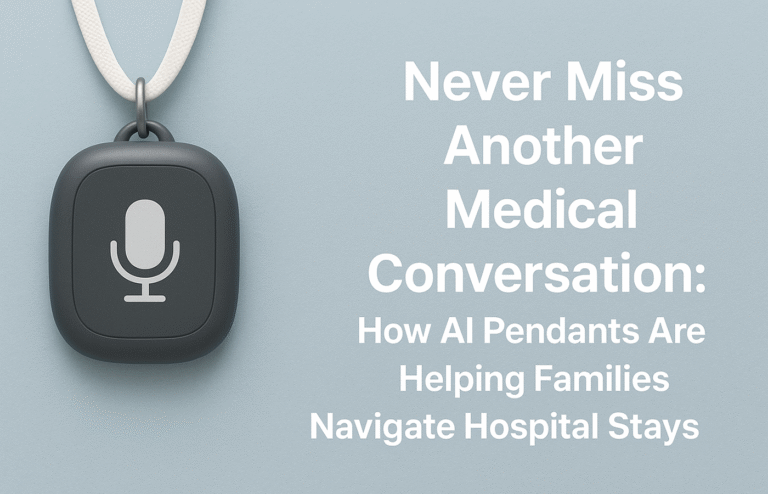Ten Ways Wearable AI Will Transform Teaching for Australian Educators
Wearable AI devices costing $300-400 AUD are revolutionising education by providing real-time classroom insights and personalised teaching support through smart glasses, AI pendants, and intelligent rings.
Key Teaching Transformations:
● Real-time student engagement analytics monitoring facial expressions and attention patterns
● Personalised professional development coaching analysing speaking pace and movement patterns
● Intelligent lesson planning with adaptive suggestions based on classroom data
● Stress management support monitoring teacher wellbeing and suggesting interventions
● Enhanced parent communication through automated transcription and optimal timing suggestions
Additional Benefits:
● Adaptive assessment systems reducing workload whilst improving feedback quality
● Inclusive teaching enhancement identifying unconscious biases and supporting diverse learners
● Seamless technology integration with heads-up displays and troubleshooting guidance
Implementation Focus: Success requires balancing AI augmentation with human expertise whilst addressing privacy and equity considerations.
The Teaching Revolution: Ten Ways Wearable AI Will Transform Education
Imagine walking into your classroom where your smart glasses instantly recognise which students need extra support, your AI pendant tracks engagement levels throughout the lesson, and your smart ring alerts you when it’s time to adjust your teaching pace. This isn’t a distant dream—it’s the rapidly approaching reality of teaching enhanced by wearable artificial intelligence.
As wearable AI devices become more sophisticated and affordable, they’re poised to revolutionise how educators teach, assess, and connect with their students. From smart rings that cost around $400 AUD to AI-powered earbuds starting at $300 AUD, these technologies are becoming increasingly accessible to Australian teachers.
Let’s explore ten transformative ways wearable AI could enhance teaching in the very near future.
1. Real-Time Student Engagement Analytics
Picture this: you’re delivering a complex mathematics lesson, wondering if your students truly understand the concepts you’re explaining. Meanwhile, your AI-powered smart glasses discretely monitor student facial expressions, posture, and attention patterns, providing real-time feedback about class engagement levels.
These intelligent teaching assistants won’t just count raised hands or measure noise levels. Instead, they’ll analyse subtle indicators of confusion, boredom, or excitement across your entire classroom. When engagement drops below optimal levels, your device might vibrate gently, suggesting it’s time to switch activities or check for understanding.
Furthermore, these systems could identify which specific students appear confused or disengaged, allowing you to provide targeted support without singling anyone out publicly. This technology transforms guesswork into data-driven teaching decisions that benefit every learner.
2. Personalised Professional Development Coaching
Teaching is a complex profession requiring continuous improvement and adaptation. Wearable AI devices could serve as personal professional development coaches, analysing your teaching patterns and suggesting evidence-based improvements.
Smart pendants equipped with advanced microphones could monitor your speaking pace, clarity, and tone throughout lessons. They might notice that you speak too quickly during afternoon classes or that student questions increase when you use specific explanatory techniques.
Additionally, these devices could track your movement patterns around the classroom, suggesting optimal positioning for different activities or alerting you when you’re unconsciously favouring certain areas. By providing objective feedback on your teaching habits, they could accelerate professional growth and enhance instructional effectiveness.
3. Intelligent Lesson Planning and Adaptation
Modern teachers juggle numerous responsibilities, from curriculum requirements to individual student needs. Wearable AI devices could revolutionise lesson planning by providing intelligent, adaptive suggestions based on real classroom data.
These devices might analyse which activities generated the highest engagement in previous lessons, automatically suggesting similar approaches for upcoming topics. They could also track pacing across different subjects, recommending optimal time allocations based on your students’ actual learning patterns rather than theoretical estimates.
Moreover, they could adapt lesson plans in real-time based on student responses. If comprehension checks reveal widespread confusion, your AI assistant might suggest alternative explanations or supplementary activities that have proven effective for similar concepts.
4. Stress Management and Wellbeing Support
Teaching can be emotionally and physically demanding, often leading to burnout and health challenges. Wearable AI devices could monitor teacher wellbeing, providing personalised recommendations to maintain optimal health and job satisfaction.
Smart rings and fitness trackers could monitor stress hormones, heart rate variability, and sleep quality. During particularly challenging days, they might suggest brief mindfulness exercises between classes or recommend adjusting your approach when stress levels spike.
Furthermore, these devices could identify patterns that contribute to teacher stress, such as specific times of day, subjects, or classroom management situations. Armed with this insight, they could provide targeted strategies for managing difficult scenarios before they become overwhelming.
5. Enhanced Communication with Parents and Colleagues
Effective communication is crucial for teaching success, yet busy schedules often limit meaningful connections with parents and fellow educators. Wearable AI devices could streamline these vital relationships through intelligent communication assistance.
AI pendants could automatically transcribe parent-teacher conferences, generating summary reports that highlight key discussion points and action items. They might also suggest optimal timing for contacting parents based on previous interaction patterns and family preferences.
Additionally, these devices could facilitate collaboration with colleagues by identifying teachers facing similar challenges or implementing successful strategies. They might suggest informal meetings with experienced educators or recommend professional learning communities aligned with your current needs.
6. Adaptive Assessment and Feedback Systems
Traditional assessment methods often provide limited insight into student understanding. Wearable AI devices could enable continuous, formative assessment that adapts to individual learning needs whilst reducing teacher workload.
These systems might monitor student responses during class discussions, identifying comprehension patterns that inform future instruction. They could also suggest personalised feedback approaches based on each student’s learning style and emotional state.
Moreover, they could automate routine assessment tasks whilst flagging students who need additional support. This technology could free teachers to focus on high-value activities like creative lesson design and meaningful student interactions.
7. Inclusive Teaching Enhancement
Creating inclusive classrooms that support diverse learners requires constant awareness and adaptation. Wearable AI devices could provide unprecedented insights into how different students experience your teaching, enabling more equitable educational experiences.
These devices might identify unconscious biases in teacher behaviour, such as calling on certain students more frequently or providing different types of feedback based on student characteristics. They could also suggest modifications to accommodate various learning differences and cultural backgrounds.
Furthermore, they could help teachers recognise and respond to students experiencing social or emotional challenges, potentially identifying early warning signs that require additional support or intervention.
8. Seamless Technology Integration
Many teachers struggle with integrating educational technology effectively into their lessons. Wearable AI devices could serve as intelligent bridges between teachers and classroom technology, making digital tools more accessible and purposeful.
Smart glasses might provide heads-up displays showing relevant information about available digital resources or suggesting technology applications that align with current lesson objectives. They could also provide step-by-step guidance for using unfamiliar educational software or troubleshooting technical issues.
Additionally, these devices could learn your technology preferences and proficiency levels, gradually introducing new tools at an appropriate pace whilst ensuring you remain comfortable and confident with each addition.
9. Intelligent Behaviour Management Support
Classroom management challenges can derail even the best-planned lessons. Wearable AI devices could provide sophisticated behaviour management support by recognising patterns and suggesting proactive interventions.
These systems might identify environmental factors that contribute to disruptive behaviour, such as time of day, seating arrangements, or activity transitions. They could also recognise early warning signs of potential conflicts, suggesting subtle interventions before situations escalate.
Moreover, they could track the effectiveness of different behaviour management strategies with specific students, building a personalised toolkit of approaches that work best for your unique classroom dynamics.
10. Continuous Professional Reflection and Growth
Reflective practice is essential for teaching excellence, yet busy schedules often limit opportunities for meaningful self-analysis. Wearable AI devices could facilitate continuous professional reflection by capturing and analysing teaching moments throughout each day.
These devices might identify your most effective teaching moments, helping you understand what makes certain lessons particularly successful. They could also suggest areas for improvement based on objective data rather than subjective impressions.
Furthermore, they could connect your experiences with research-based best practices, recommending professional development opportunities that align with your specific growth areas and teaching context.
Implementation Considerations
While these applications offer exciting possibilities, successful implementation requires careful attention to privacy, ethics, and pedagogical soundness. Schools must ensure that AI augmentation enhances rather than replaces human judgment and professional expertise.
Teacher training will be crucial for maximising these technologies’ benefits whilst maintaining focus on core educational values. Additionally, equity considerations must address potential disparities in access to advanced wearable AI devices across different schools and communities.
The Path Forward
As these technologies mature and become more affordable, they promise to create more effective, personalised, and sustainable teaching practices. The educators who embrace these tools early may find themselves better equipped to meet the diverse needs of modern learners whilst maintaining their own professional wellbeing.
The future of teaching isn’t about replacing human connections with artificial intelligence—it’s about augmenting teacher capabilities with intelligent technology that supports better decision-making, reduces administrative burden, and enhances educational outcomes.
For Australian teachers ready to embrace this technological revolution, the possibilities for transforming education are truly limitless. These tools could help create learning environments where every student thrives and every teacher feels empowered to deliver their best work.

